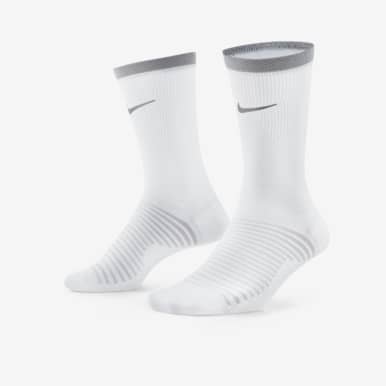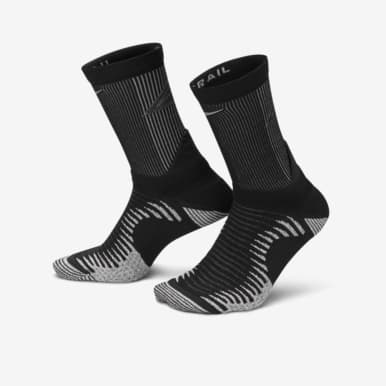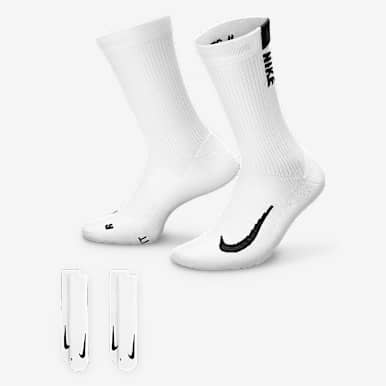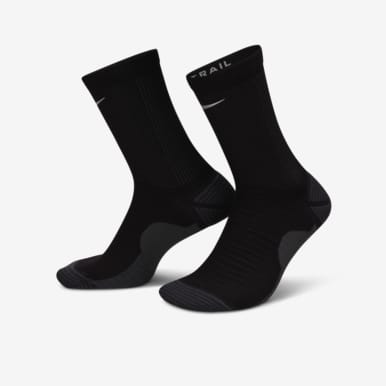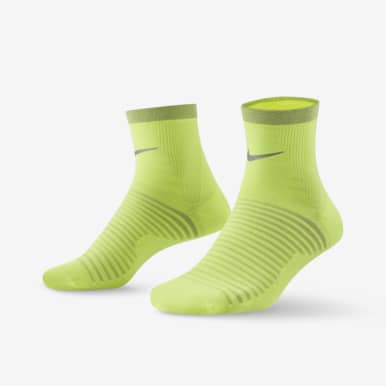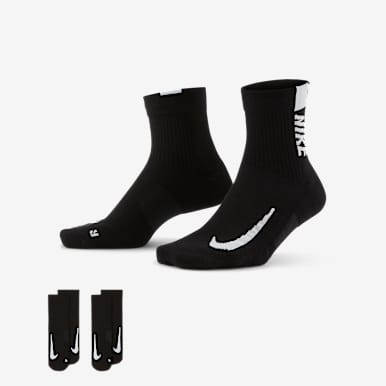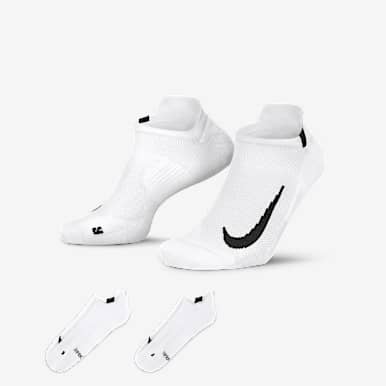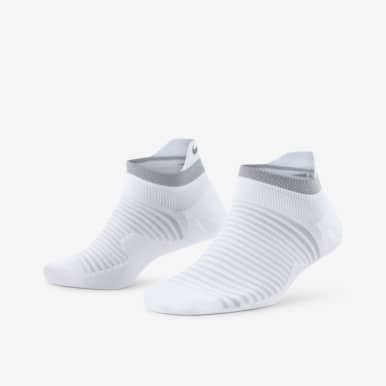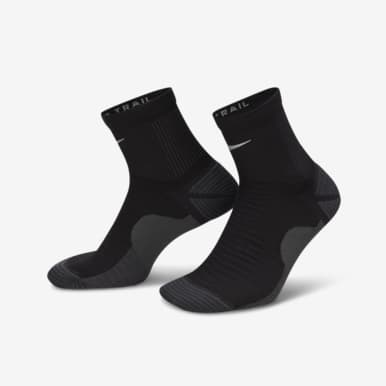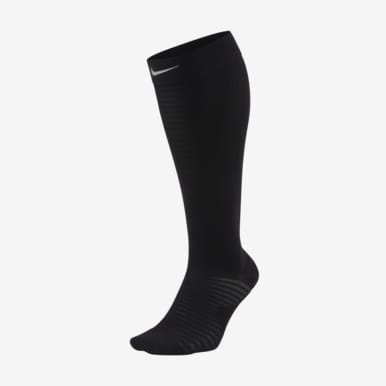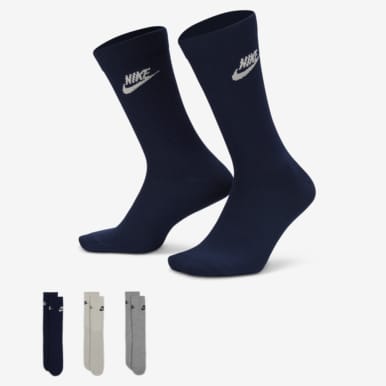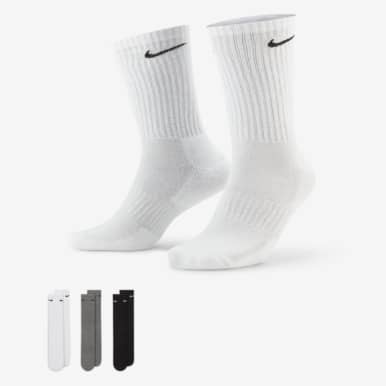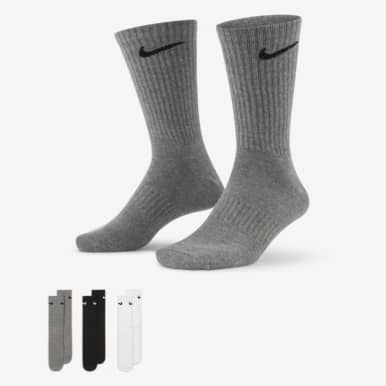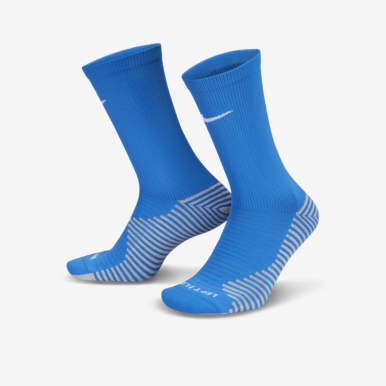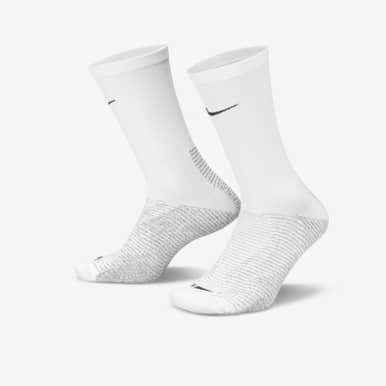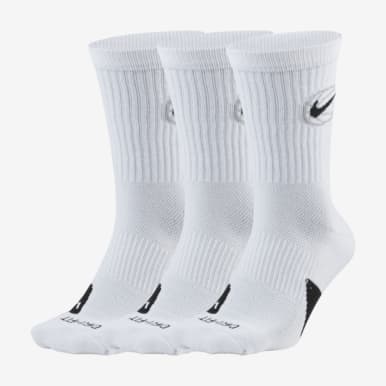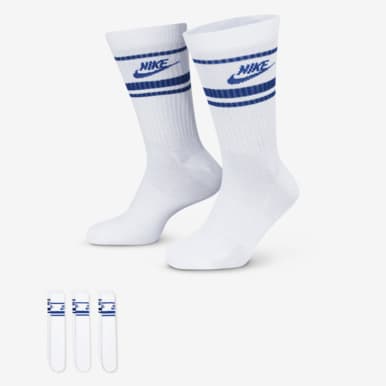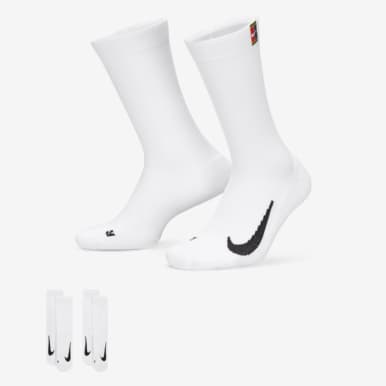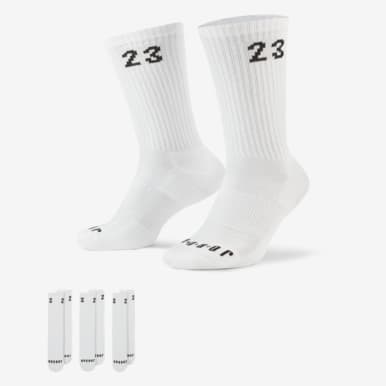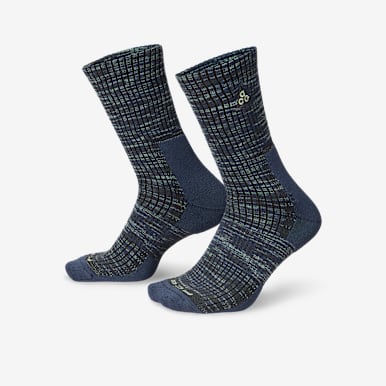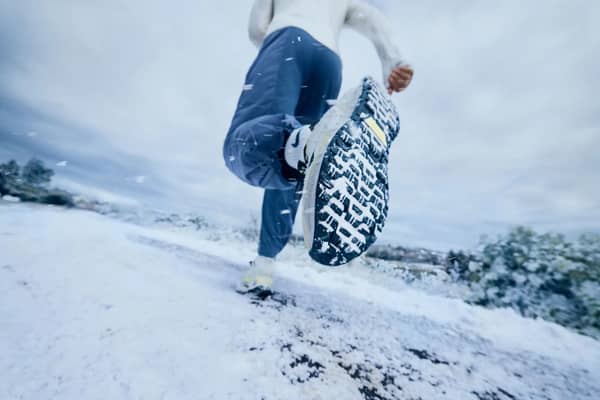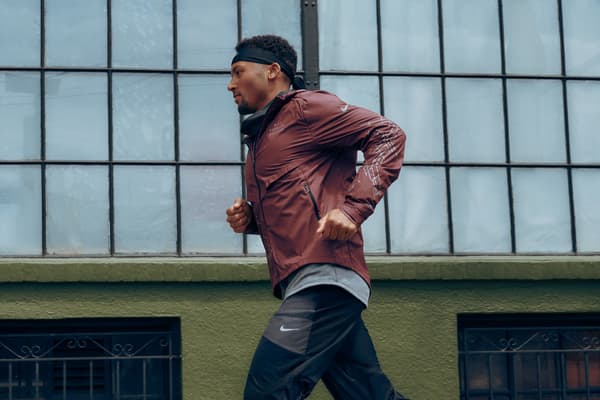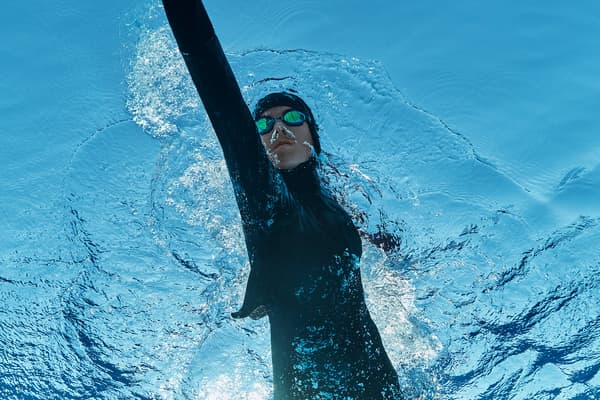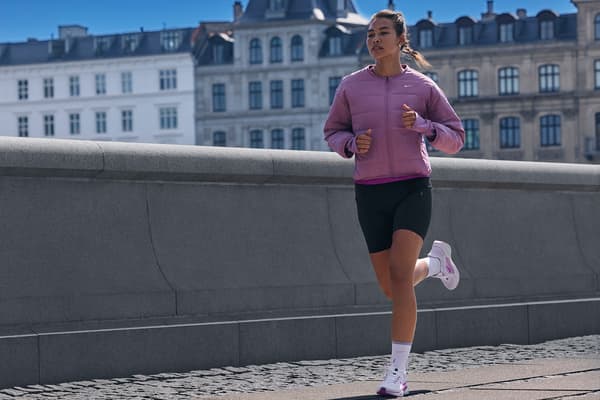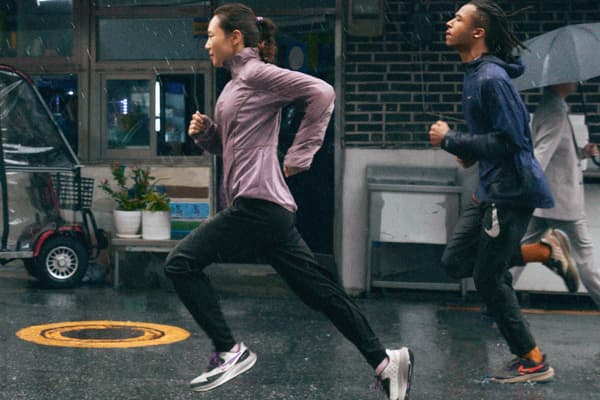What to look for in the best socks for running
Buying guide
Find the Goldilocks of running socks with this guide.

Nothing annoys runners quite like a bad pair of socks. Whether your socks slip down inside your shoe, fail to protect against blisters or trap sweat, they can keep you from keeping up.
The best running socks keep your feet dry, cushioned and comfortable throughout your run. Here are some features to look for.
Moisture-Wicking
Moisture-wicking socks are a must for runners. Sweating is a sign you're working hard, but it can also cause your socks to rub against your shoe, causing blisters. Choosing the wrong sock fabric, like cotton, can intensify sweat, making your feet feel swollen and hot.
When your feet sweat, you need a quick-drying material that absorbs and diffuses sweat to keep your feet dry and the air flowing. Otherwise, you'll be left with damp, smelly feet. This can increase your risk of developing athlete's foot and fungal infections.
Socks with Nike Dri-FIT technology wick sweat away from the skin so it can be evaporated. The breathable, anti-odour fabric and ventilation properties promote airflow to keep your feet dry and cool.
Cushioning and Compression
Each heel strike produces a force equal to three to four times your body weight. For long-distance or daily runners, this adds up and can lead to running injuries like plantar fasciitis or stress fractures. Wearing the right footwear helps absorb this shock, but it doesn't stop with your running shoes.
Socks that have cushioning reduce impact, helping to prevent injuries and keeping your feet comfortable. They also provide protection in areas that experience the most friction—the back of the heel and sides of the toes. This reduces the thinning of socks, which contributes to blisters.
Cushioning can range from light to heavy, suitable for different activities and climates.
- Light Cushioning: For a barefoot-running feel, opt for lightweight fabrics with light cushioning. The lighter the fabric, the more flexible the movement to feel every step of the run.
Nike Spark Lightweight Socks have a thin design with sweat-wicking technology and mesh fabric for a dry and cool experience. But they also have extra yarn in the footbed and ankle to give you soft support with every step.
- Medium Cushioning: Running socks with medium cushioning give your feet the support they need to absorb shock, while allowing flexible movement. A popular option for trail runners, medium-cushion socks let your feet react to uneven ground and cushion the impact.
Nike Everyday Plus Cushion Socks offer cushioning under the heel and forefoot to soften the impact of your workout. They also have a snug band around the midfoot for arch support, and the heel and toe are reinforced to limit wear and provide long-lasting comfort.
- Max cushioning: Running socks with heavy cushioning are suitable for those running in colder climates or on hard terrain. They're the thickest and warmest, providing maximum cushion to protect against climate and impact, perfect for long runs. When worn with cushioned running shoes, your feet get the most protection against injury.
Nike Everyday Max Cushioned Socks have a thick terry sole that gives you extra comfort for foot drills and lifts while high-friction yarns in the footbed reduce slippage. The Dri-FIT Technology keeps your feet dry and comfortable, to wick sweat away from the feet as things start to heat up.
- Compression Socks: Compression socks use graded compression to encourage blood flow and improve circulation. For long-distance running, wearing over-the-calf compression running socks reduces oscillation of your calf muscle. Oscillation is what happens inside your muscle when your feet hit the ground on impact. It can cause microtrauma to the muscle.
Arch Support
Good running socks will also have built-in arch support. A supportive band around the arch provides extra support and shock absorption at the arches of the feet. This can help prevent plantar fasciitis pain and improve your running foot strike.
Running socks with heavy cushioning typically offer more support. They have thicker padding and a deeper heel pocket to absorb shock. Nike Trail-Running Crew Socks are designed to support your feet when your off-road miles become wet and rocky. The temperature-regulating quality of the wool-blend fabric is another asset.
Blister Prevention
One of the most common complaints of runners is blisters. A blister is caused by friction and intensified by heat and moisture. The right running sock can allow you to enjoy a blister-free run, vital for long runs and when breaking in new running shoes.
To limit the amount of friction, choose running socks that have cushioning in the areas most prone to friction—the heels and toes. Anti-blister running socks may have a reinforced heel tab and toe with added cushioning.
Nike Dri-FIT Technology keeps your feet cool and dry to prevent heat and moisture from getting trapped. Feet that can breathe and regulate temperature reduce the risk of blisters. Go for socks with a snug, flexible fit that stay in place to prevent the friction caused by socks that slip and slide.
Sock Height
Running socks come in different lengths. Which ones you pick largely depends on your style and preference. Your options range from no-show running socks to mid-crew to crew-cut.
No-show running socks means they can't be seen outside of your running shoes. Less fabric also keeps you cooler on hotter days. Just make sure your no-show socks contain enough grip to stay in place.
Ankle socks often contain added protection for your heels against friction and blisters. They are also warmer, making them more suitable for colder weather. If you're wearing hiking boots, longer socks can protect your ankle from chafing.
Frequently asked questions
What Socks Are Best for Cold Weather?
Go for mid-crew or crew-cut socks for autumn and winter. The added sock height offers more fabric to keep your feet and ankles warm. Opt for thicker socks made from cotton or wool with medium to max cushioning.
What Running Socks Are Best for Sweaty Feet?
Look for socks that contain materials like polyester, nylon and elastane. These materials are lightweight and can keep feet cool. Rather than retaining sweat like cotton or insulating your feet like merino wool, synthetic fibres with moisture-wicking Dri-FIT technology help keep your feet dry.
Should You Run in Compression Socks?
Compression socks can be great running socks, as they can help prevent leg cramps and swelling by improving circulation. You can get no-show compression socks that specifically target the feet. Or you can get knee-high compression socks to wear under training trousers that work on the calf to reduce oscillation.
Words by Emilina Lomas
